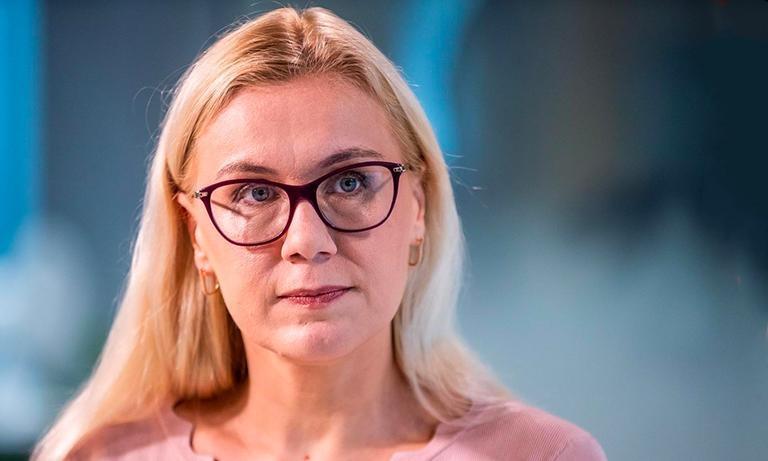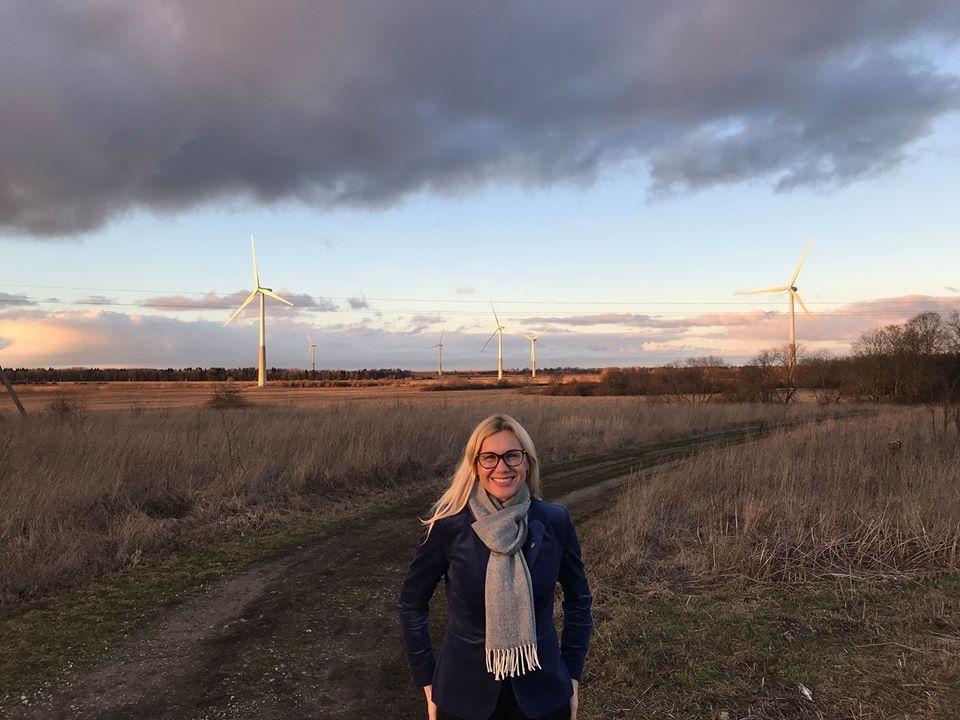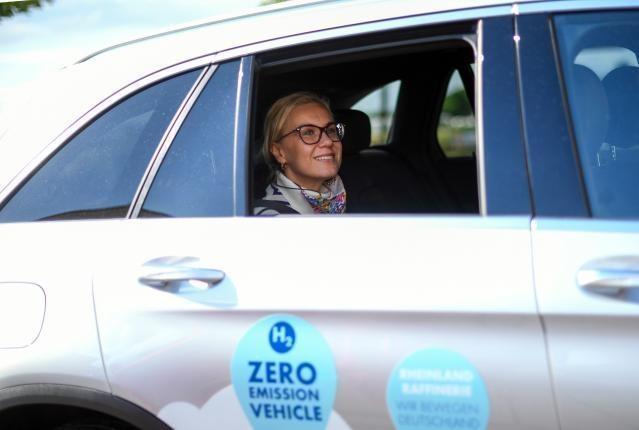
The European Green Deal is both our environmental and economic strategy
Interview to Kadri Simson, European Commissioner for Energy
The COVID-19 pandemic has not changed the fact that we are still facing the climate challenge, nor EU’s commitment to climate neutrality by 2050. Our goal remains the same – an EU that is powered by clean energy, treads lightly on the planet and cares for its people. There is a growing consensus that we should use this crisis as an opportunity to build a better future for EU’s citizens. The European Green Deal is both our environmental and economic strategy: it will keep guiding us in the coming years and the environmental goals will remain important drivers of our policy, alongside energy security and affordability.
Ms Simson, many experts are pointing out that the collapse of investments in the energy sector due to the COVID-19 crisis is also having serious impacts on energy security and on the transition towards cleaner sources and the fight to global warming. In your opinion is there a risk that such issues as the protection of the environment could recede into the background in the name of economic recovery?
The COVID-19 pandemic has left no country and no walk of life untouched. We need a strong response to this unprecedented crisis, to make sure our people and economy recover as fast as possible. But it has not changed the fact that we are still facing the climate challenge, nor EU’s commitment to climate neutrality by 2050. Our goal remains the same – an EU that is powered by clean energy, treads lightly on the planet and cares for its people. I believe that there is a growing consensus that we should use this crisis as an opportunity to build a better future for EU’s citizens. Indeed, economic recovery and building a cleaner economy go hand in hand. Let me give you just one example: Increasing the local renewable capacity in Europe not only contributes to the reduction of emissions but also creates local jobs and increases our resilience towards external shocks. The European Green Deal is both our environmental and economic strategy and will keep guiding us in the coming years. The environmental goals will remain important drivers of our policy, alongside energy security and affordability.
On the other hand, Mr Fatih Birol, ED of the International Energy Agency said that “governments can take advantage of the situation to increase their ambitions on the climate and launch sustainable policies to stimulate the economy, focused on clean energy”. Can the crisis then create opportunities to accelerate the energy transition and, at the same time, boost economic recovery?
I remember well the previous economic crisis. At that time, I was working in the Estonian national parliament. As in in many other EU Member States, the focus was put on austerity measures – placing purely fiscal concerns ahead of people's well-being. This time we have to save the economy without leaving any region or person behind. The recovery has to be future-oriented and people-centered. And of course, it has to be green. Our response to this difficult task is the massive EUR 1.8 trillion economic recovery plan agreed by the European leaders in June based on the Commission proposal. 750 billion euros of the package will come from the new economic recovery instrument NextGenerationEU, designed to combat the effects of the crisis. Worth over one trillion euros, the strengthened EU budget for the next seven years takes a leap to the future. On the one hand, we need to put money where it has an immediate economic stimulus effect and where it supports the most affected sectors. On the other hand, we need to keep in mind the long-term benefits and making our economy more resilient for the future. By supporting yesterday's priorities and technologies with public money, we would seem to be taking it one step further, but in the long run two steps back. It’s time for bold, future oriented investments. We also learned from the previous crisis that green recovery measures create more jobs and growth than traditional, less sustainable measures. That is why 30% of the EU’s budget should be climate-related and why the green and digital transitions are at the heart of the recovery package. For instance, nearly 40% of all European energy consumption is the result of heating and cooling of buildings. This makes renovation one of the best ways to save energy and reduce carbon emissions. However, what is equally important in the current situation is that renovation is a labor-intensive activity and therefore creates new jobs and boosts the economy. According to the International Energy Agency, 60% of the money spent on improving the energy efficiency in houses ends up with the people involved in the construction or the production of materials. This stimulates the economy, helps the workers and also eases the burden on the planet.
And which are the most important actions to be taken to move in that direction?
To become climate-neutral by 2050, Europe needs to transform its entire energy system, which accounts for 75% of the EU’s greenhouse gas emissions. Broadly speaking, we know what we need to do to get there: more energy efficiency, more renewable energy, better infrastructure and constant research and innovation. In July, the Commission launched two new important initiatives: The EU strategies for energy system integration and hydrogen. Today's energy systems are mostly built along parallel value chains that rigidly connect a specific energy source to the end user (such as oil products to transport).

It is inefficient and makes deep decarbonisation very difficult. What we need are more flexible and better integrated systems that can accommodate a much higher share of renewables and other clean solutions. This means for example electrification of transport and reuse of waste heat from factories and data centres. Hydrogen will play a key role in this, as it allows us to cut emissions in sectors where it’s otherwise challenging – like heavy industry and some areas of transport. Our focus is on green, renewable hydrogen, and we will push for making it competitive by the next decade. These strategies will be followed up and complemented still this year by further important energy initiatives, covering our main priorities: the Renovation Wave, the Offshore Energy Strategy and the revision of the TEN-E (Trans-European Networks for Energy) regulation.
“green recovery measures create more jobs and growth than traditional, less sustainable measures. That is why 30% of the EU’s budget should be climate-related and why the green and digital transitions are at the heart of the recovery package„
The informal conference of energy ministers in June had a focus on innovation in the energy sector, which may play a key role in boosting Europe's economic recovery and the European Green Deal. Do you think that member countries are investing enough in this sector? Are you concerned about a possible lack of investments in breakthrough innovation for clean energy?
I strongly believe that investing in future-oriented technologies and innovation is crucial for our recovery and resilience. It’s an area where we could always do more, both to boost our economy and to move towards our climate-neutrality target. Funding clean technologies has an important place in the EU’s budget and recovery package proposed by the Commission. For example, Horizon Europe funds will be increased to almost 85 billion EUR, bringing extra resources for the digital and green transitions. Horizon will allow us to support the most innovative new ideas. Something we cannot even imagine at the moment, but what could be the next breakthrough solution.
On 29th January 2020, the Commission announced its intention to launch a 'renovation wave' initiative in the buildings sector, under the European Green Deal. That was just a few days before the outbreak of the COVID-19 pandemic effects were begun to be felt in Europe. Still, do you think investments in building retrofitting may contribute to a broader economic recovery? Do you think a revision of the current legislation would be needed and what will be the EU commission recommendations?
We will come out with the Renovation Wave initiative in September and I think it’s an extremely timely and relevant proposal As buildings are where we use almost 40% of our energy, this obviously represents a big opportunity to improve our energy efficiency. As said before, a strong push for building renovation also makes sense in the context of the recovery, as it creates local jobs and reduces energy bills, two things that provide immediate relief in a difficult economic situation. It also helps with public acceptance of ambitious climate policies. Our goal is to double the pace of renovation. We will look at all types of buildings, but put special focus on apartment buildings, affordable housing, schools and hospitals. Support to SMEs is another important area, as they are extremely important for the EU economy and many of them struggle because of the crisis. The initiative will cover topics like energy poverty, digitalisation, heating and cooling - the latter is where most of the energy in buildings is used. Often, renovation projects get stuck because of practical problems and we intend to provide technical assistance to help with project preparation and share best practices from countries where renovation has worked well. For example, in my native Estonia we have the so-called Kredex1 measure, which is extremely popular and efficient at the same time.

There is also a lot of talk about hydrogen technologies: the European Commission recently presented a strategy for the promotion of this energy vector, Germany approved a national hydrogen strategy and a number of major European group have created an alliance for the production of renewable hydrogen. Why is hydrogen so relevant?
In an integrated energy system, hydrogen could become a major protagonist in the decarbonization of industry, transport, power generation and storage, and buildings across Europe. We have already presented a new EU Hydrogen Strategy that addresses how to transform this potential into reality, through investments, regulation, market creation, and research and innovation.
We believe that hydrogen has the potential to power sectors that are not suitable for electrification and provide storage to balance variable renewable energy flows. This can only be achieved with a coordinated action between the public and private sectors, to develop renewable hydrogen, produced using mainly wind and solar energy. In the short and medium-term, however, other forms of low-carbon hydrogen are needed to rapidly reduce emissions and support the development of a viable market. From 2020 to 2024, our aim is the installation of at least 6 gigawatts of renewable hydrogen electrolyzers in the EU, and the production of up to one million tonnes of renewable hydrogen. Then from 2025 to 2030, hydrogen will need to become an intrinsic part of the EU’s integrated energy system, with at least 40 gigawatts of renewable hydrogen electrolyzers and the production of up to ten million tonnes of renewable hydrogen in the EU. Finally, from 2030 to 2050, renewable hydrogen technologies should reach maturity and be deployed at large scale across all hard-to-decarbonize sectors. Hydrogen is seen as the missing link in decarbonizing the energy sector and we see historic interest in it all over the world.
Tackling energy poverty and protecting vulnerable consumers is also a main commitment of the EU. What strategies are being worked out to meet the needs of energy vulnerable EU citizens?
The Commission has committed itself to supporting Member States in their fight against energy poverty. It is a priority clearly set out in the European Green Deal. For us, implementing the “Clean Energy for all Europeans” legislative package is the starting point to tackling energy poverty across the EU. This forward-looking regulatory framework addresses energy poverty from two complementary angles: the competitive electricity markets delivering the best price, and energy efficiency lowering the costs. The Member States’ engagement is at the same time reinforced through the national energy and climate plans, and the long-term renovation strategies. Also, the clean energy package mandates the Commission to provide guidance to Member States in addressing the issue.
Another option to address energy poverty issues is the aforementioned Renovation Wave, which will allow consumers to save on energy consumption. We will also link a dedicated Commission Recommendation on energy poverty to the Renovation Wave Initiative. All levels of governance, starting from local and district level, must be on board to make a difference in this field. Relevant stakeholders such as the private sector and housing associations must join forces and work together to enable the fair transition.
A last question: in the European Green Deal, a 'Just transition Mechanism' is also envisaged; can sustainability be coupled with equity and inclusion? Is it a challenge EU member states will be able to meet?
I come from a country where a large part of the energy system is still reliant on mining oil shale, a solid fossil fuel. I am well aware how challenging the transition can be and the social cost it can claim. The starting points and challenges in Member States differ significantly and there is no one-size-fits all solution. At the same time, a clean energy transition where only a few see opportunities or which only improves the lives of some and not all, is not a success. It is a failure. This is why the Commission has proposed the Just Transition Mechanism, to ensure no person or region is left behind. The Just Transition Fund and Territorial Just Transition Plans are at the core of our proposal. After the discussions on the EU budget, the leaders agreed to allocate 17.5 billion EUR to the Just Transition Fund, to help those people and regions who have to make a bigger transformation effort than most. We will also be helping the most vulnerable regions through the Just Transition Platform that offers information, technical assistance and a place to share experiences and best practices. This is a historic challenge for all of us, but it can be done, and the EU will use every tool we have to support our Member States on this journey.
KredEx was founded in 2001 by the Estonian Ministry of Economic Affairs and Communications with a purpose to improve financing possibilities of enterprises, manage credit risks connected with export, enable people to build or renovate their home and develop energy-efficient way of thinking. Through years, KredEx has become a considerable link between the Estonian financing institutions and loan applicants, exporters and foreign buyers. KredEx offers financing services managing financial risks and implements the development plan of Estonian housing area. http://www.nefi.eu/our-members/estonia-kredex/

